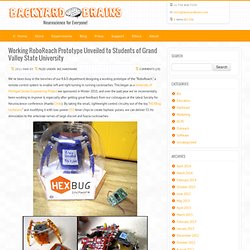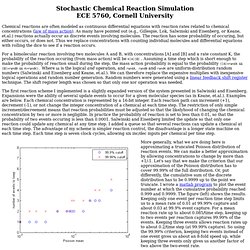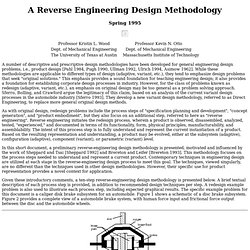

2012 Brooklyn: Large In/Outdoor Home Aquaponics Build. Kijani Grows : Urban Garden Systems. Recirculating water systemuses bacteria to compost fish waste into plant nutrientsgrows plants on gravel and water: NO SOIL!

Produces BOTH FISH and plants uses ONLY 2-10% of the water used in regular farming10 times as much PRODUCE as CONVENTIONAL FARMINGfood GROWN anywherea secure source of fresh healthy vegetables and fishNO WEEDS or soil based bugs. Backyard Brains » Working RoboRoach Prototype Unveiled to Students of Grand Valley State University. We’ve been busy in the trenches of our R&D department designing a working prototype of the “RoboRoach,” a remote control system to enable left and right turning in running cockroaches.

This began as a University of Michigan Senior Engineering Project we sponsored in Winter 2010, and over the past year we’ve incrementally been working to improve it, especially after getting great feedback from our colleagues at the latest Society for Neuroscience conference (thanks Cindy). By taking the small, lightweight control circuitry out of the toy “HEXBug Inchworm” and modifying it with low-power 555 timer chips to create biphasic pulses, we can deliver 55 Hz stimulation to the antennae nerves of large discoid and fuscia cockroaches.
We gave a seminar recently on Feb. 25th to the undergraduate students at Grand Valley State University (thanks for the invite John and Merritt!) , and we publicly unveiled a working prototype! Adaptive Frequency Oscillators. Adaptive frequency oscillators Our first attempt toward adaptive dynamical systems was to develop the concept of adaptive frequency oscillators, which are oscillators that can adapt their parameters to learn the frequency of any periodic input signal.

It means that they change their parameters in order to have an intrinsic frequency that corresponds to the frequency of the input. This mechanism go beyond mere synchronization since the new frequency stays encoded in the system, even if the teaching signal disappears and it works for any initial conditions. Consider a generic oscillator with 2 state variables, forced by a periodic input signal F where x and y are the state variables and omega controls the frequency of the oscillations. Main Page. Brewtarget. Chemistry & Chemical Engineering Library - University of California, Berkeley. Chem_Sim. Chemical reactions are often modeled as continuous differential equations with reaction rates related to chemical concentrations (law of mass action).

As many have pointed out (e.g., Gillespie, Lok, Salwinski and Eisenberg, or Keane, et.al.) reactions actually occur as discrete events involving molecules. The reaction has some probability of occuring, but either occurs, or does not. Thus we replace concentrations with counting individual molecules and differential equations with rolling the dice to see if a reaction occurs. For a bimolecular reaction involving two molecules A and B, with concentrations [A] and [B] and a rate constant K, the probability of the reaction occuring (from mass action) will be K[A][B] . Assuming a time step which is short enough to make the probability of reaction small during the step, the mass action probability is equal to the probability ([A]>randA && [B]>randB && K>randK). So what do we need to do to implement a maximum of two events?
Calibrate Oregonator. Electronic Journals - Chemistry & Chemical Engineering Library - University of California, Berkeley. Quantrev. Mathematics Applied to Physics/Engineering. MecMovies - Mechanics of Materials. - StumbleUpon. Spring 1995 A number of descriptive and prescriptive design methodologies have been developed for general engineering design problems, i.e., product design [Pahl 1984, Pugh 1990, Ullman 1992, Ulrich 1994, Asimow 1962].

While these methodologies are applicable to different types of design (adaptive, variant, etc.), they tend to emphasize design problems that seek "original solutions. " This emphasis provides a sound foundation for teaching engineering design; it also provides a foundation for establishing corporate design processes in industry. However, for the class of problems known as redesign (adaptive, variant, etc.), an emphasis on original design may be too general as a problem solving approach. Sferro, Bolling, and Crawford argue the legitimacy of this claim, based on an analysis of the current variant design processes in the automobile industry [Sferro 1993]. Given these introductory comments, a ten-step reverse-engineering design methodology is presented below. Figure 1. Chemistry Tutorials & Drills.